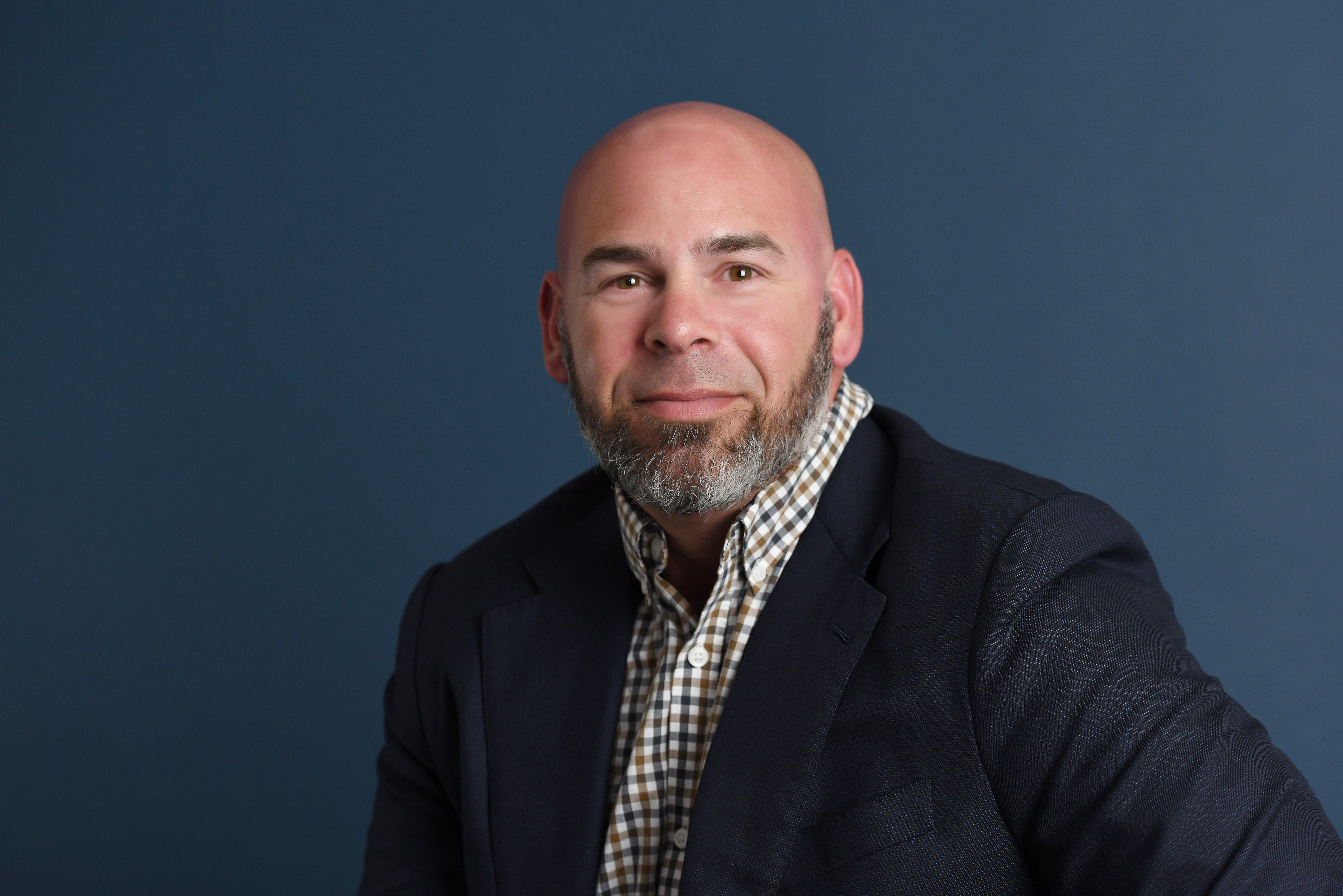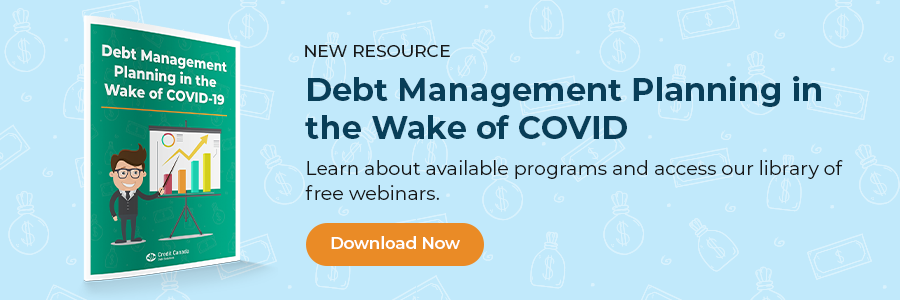
Credit card debt has reached dizzying new heights in recent years. In 2019, the total amount of credit card debt for all Canadians reached over $100 billion, while the average Canadian had over $4,200 in credit card debt. Then, in 2020, the COVID-19 pandemic happened causing lockdowns and business closures that cost many their jobs — and their ability to pay down their debt. If you’re wondering how to get out of credit card debt fast, we've got you covered!
As one of the leading debt consolidation services in Ontario, we help people get out of credit card debt so they can live more fulfilling lives, free from that burden and stress.
While some Canadians managed to catch up on their debt payments, including credit card payments, and increase their savings over the last year, others are still struggling and falling behind on their bills due to the financial impact of COVID-19.
How Does Credit Card Debt Build Up So Quickly?
Many people use credit cards (sometimes referred to as “plastic”) as a convenient way to make purchases quickly, both in-person and online. In fact, there are roughly 76.2 million Visa and MasterCard credit cards in circulation in Canada. With a population of 38 million (as of end-of-year 2020), that’s a little more than two cards per person.
Though many Canadians pay off their credit card balances in full every single month (effectively negating the cost of interest), it’s all too easy to fall behind. Some situations which can result in the sudden growth of credit card debt include:
- Job loss, which drives people to rely heavily on their credit cards to make ends meet in the short term.
- Changes in interest rates due to introductory offer periods ending.
- Accidentally missing a bill because of major life changes (e.g., marriage, divorce, new child, death in the family, injury, etc.).
- A major life change that severely impacts cash flow (i.e., losing a partner, maternity/paternity leave, illness, etc.) leading consumers to rely more heavily on credit.
- An emergency expense (e.g., vet bill, dental work, home maintenance, etc.)
The interest rate on credit cards is often why it can be so difficult to get out of debt. The higher the interest rate is on a card, the faster debt accumulates — and the harder it is to pay off even when the balance is relatively small.
Want a Roadmap for How to Get Out of Credit Card Debt? Check out our Debt Calculator!
5 Things to Know about Credit Cards
Credit cards can be incredibly useful tools for making purchases and improving your credit. But it's important to know a few basics before using them! With this information, it’s easier to understand how to use them responsibly, avoid taking on more debt, and protect your credit score.
1. What Is APR?
If you’ve received a credit card offer in the mail, you may have come across the term “APR” at least once. APR is an acronym for “Annual Percentage Rate.” There is a legal requirement in Canada for loan agreements to display their interest in APR so people can more easily understand the true cost of borrowing.
For example, say you have a credit card with an APR of 27%. If you had $1,000 of debt on that card for a year, you would pay approximately $270 in interest — depending on your payment schedule — or about $22.50 per month.
However, it’s important to know that the APR on a card may change — either over time or for certain types of transactions. For example, many credit cards offer “introductory” rates that are at a lower-than-normal percentage. After a while, the APR goes from the low “introductory” rate back up to the “normal” one. This normal rate may be significantly higher, so the credit card user may see their balance grow faster than expected.
Other exceptions include cash advances. For many credit cards, the interest charged on cash advances is higher than regular transactions. There is also no grace period when it comes to cash advances. With regular credit card transactions, you have a grace period of about 30 days or until your next billing period where interest isn't charged. However, the interest on cash advances is charged immediately. (More on cash advances later.)
So, it’s important to avoid using cash advances when possible — and pay them down first — to minimize credit card debt.
2. Credit Limits
A credit limit is how much money you’re allowed to spend on the credit card before the creditor will reject charges (or apply fees for spending more than your limit). In Canada, credit card providers can only increase your credit limit with your express consent (e.g., written or verbal) to do so.
While higher limits may be more convenient for making big purchases, they can also mean having your debt grow faster. For example, say that, instead of having $1,000 of credit card debt, you have a $3,000 balance on a credit card with a 27% APR interest rate for a year. This would increase the interest owed from approximately $270 to $810 (or $67.50 a month), depending on your payment schedule.
3. How Credit Cards Affect Your Credit Score
Credit cards can be an integral tool to help build a good credit history and increase your credit score. Having a credit card (as well as other sources of credit, like a line of credit) and keeping up with payments as agreed can help you build a positive credit history, which can then help improve your credit score.
However, if you miss payments, have your credit limit decreased, close an account, or make an especially large purchase, you may see your score drop a bit. If your credit cards are all maxed out or close to their spending limits, your credit utilization rate will be high, which can also impact your credit score.
4. Cash Advances
A cash advance is when a credit card is used to withdraw money. As mentioned earlier, cash advances often have extra fees or increased interest rates versus regular transactions. Relying on cash advances can increase balances very quickly, which makes it harder to get out of credit card debt.
So, for those wondering how to get out of credit card debt, avoiding cash advances as much as possible can be a very useful tip.
5. Secured and Unsecured Credit Cards
Two types of credit cards available to consumers include secured and unsecured cards. While both provide a simple way to complete transactions at stores or on websites, they each operate a bit differently.
An unsecured credit card allows you to borrow money up to a specific credit limit, interest-free, as long as the entire balance is paid off before the due date. If you pay only a portion of your balance, you will rack up interest charges. This is the standard type of credit card that comes to mind when most people think about credit cards.
A secured credit card also allows you to borrow against a set credit limit and pay it back later. But the main difference is that you have to make a deposit on the card first (which is often used as the limit for that card). This security deposit protects the lender in case you don’t keep up with your payments. However, it’s important to note that it’s not used to make payments towards your purchases; it is simply used as collateral.
Secured credit cards are often a key tool for rebuilding credit because they don’t require a “good” credit score to obtain one, and your payment history is reflected on your credit report.
What about Prepaid Cards?
There’s also a third option: Prepaid credit cards. Unlike the other options, a prepaid card doesn’t involve borrowing any money. You simply load it up with your own money and whatever amount you put on the card is your spending limit. Unlike a secured credit card, the deposit you make on a prepaid card is used to pay for purchases made with the prepaid card. So once you’ve spent the total amount of money you’ve loaded onto the card, the prepaid card can no longer be used until you load it with more funds.
While anyone can get a prepaid credit card, it’s important to note that prepaid credit cards do not help with building your credit history or improving your credit score.
Need Help with Credit Card Debt or Other Monthly Bills? Our free credit counselling services can help!
How to Get Out of Credit Card Debt in Canada
For many, the critical question isn’t how to get more credit, but rather how to get out of credit card debt fast. Large balances on credit card accounts can mean having to pay large amounts of interest, which in turn could mean having to choose between being able to pay down the card or purchase necessities.
If you’re wondering how to get out of credit card debt, there are a few ways to do it:
Focusing on One Debt at a Time: Snowball and Avalanche Repayment Methods
If you speak to a certified Credit Counsellor from a not-for-profit credit counselling agency, you might hear the terms “snowball” and “avalanche” as different ways to pay off or pay down your debts. These are two different strategies for focusing on paying off debt balances in full one at a time, while still making your minimum payments on all of your other debts.
The difference between the two strategies is which debts you focus on first:
- Snowball Debt Repayment Method: In this strategy, you pay off your smallest balance first, while making minimum payments on your other debts. Once the smallest balance is paid off, future payments are applied to the next-lowest balance until you pay down every debt to $0.
- Avalanche Debt Repayment Method: This strategy focuses on paying off the debt or credit card with the highest interest rate first. So, you make your minimum payments on all your debts, but whatever money is left over, you put it towards paying off the debt with the highest interest rate. Then, once that balance has been paid off in full, future payments are applied to the next-highest interest rate loan or credit card, until they are all paid off in full.
The snowball method is useful for helping you stay motivated in paying off your debts, since you’ll see the debts with the smallest balances get paid off quicker, especially in the beginning. However, the avalanche method is usually better in the long term since it minimizes the total amount you spend on interest.
Using a Debt Consolidation Loan
Wondering how to pay off your credit card debt fast? A debt consolidation loan could help! This method for consolidating credit card debt could be a great option if you have a good credit score.
When card balances are too high, or there are too many debts to keep track of, many people may turn to debt consolidation loans. Here, you apply for a loan at a bank or other lender to get the funds needed to pay off all of your debts.
This can help you simplify managing debt repayment since you will only have to concern yourself with making a single monthly payment to a single lender, instead of several. If you find a good lender and you have a good credit score, you may be approved for a debt consolidation loan with a lower interest rate than the overall interest rate you're paying on your individual debts — which can help you get out of debt faster.
However, you have to be approved for a debt consolidation loan. If your credit score is low, then a lender might not offer you a debt consolidation loan with favourable terms, like a lower overall interest rate — if they offer you a loan at all.
It's also very easy to fall back into debt by using the newly-freed up credit cards, which would have been paid off using the debt consolidation loan. So, it’s helpful to cut up those cards or lock them away to avoid the temptation of using them while you pay off the debt consolidation loan.
Signing Up for a Debt Consolidation Program
If you can’t get a debt consolidation loan, but you still need some help paying off your credit card debt, a Debt Consolidation Program (DCP) could be your go-to option.
A DCP is a way for you to consolidate all of your unsecured debts into a single, easy-to-manage monthly payment (with a little help from a certified Credit Counsellor). If you sign up for a DCP, your Credit Counsellor will negotiate with your creditors to drop the interest rates on your debts (or stop the interest from accumulating completely, if possible) to give you more breathing room to pay off your debts in a timely manner.
Your Credit Counsellor will also negotiate a debt repayment schedule with your creditors that has a set end date. Then, you simply make your DCP payment each month. The monthly payment you make towards the DCP is balanced with your monthly budget, so you can still cover your everyday expenses (i.e., food, housing, utilities, etc.) while you pay off your debt.
Although you will have to give up your unsecured cards when completing a DCP, it’s often the best way to get out of credit card debt (and stay out of it)!
Need help on how to pay down credit card debt? Reach out to Credit Canada online or call 1.800.267.2272 to book a free Debt Assessment with one of our Credit Counsellors! All of our counselling is free and confidential.

Frequently Asked Questions
Have a question? We are here to help.
What is a Debt Consolidation Program?
A Debt Consolidation Program (DCP) is an arrangement made between your creditors and a non-profit credit counselling agency. Working with a reputable, non-profit credit counselling agency means a certified Credit Counsellor will negotiate with your creditors on your behalf to drop the interest on your unsecured debts, while also rounding up all your unsecured debts into a single, lower monthly payment. In Canada’s provinces, such as Ontario, these debt payment programs lead to faster debt relief!
Can I enter a Debt Consolidation Program with bad credit?
Yes, you can sign up for a DCP even if you have bad credit. Your credit score will not impact your ability to get debt help through a DCP. Bad credit can, however, impact your ability to get a debt consolidation loan.
Do I have to give up my credit cards in a Debt Consolidation Program?
Will Debt Consolidation hurt my credit score?
Most people entering a DCP already have a low credit score. While a DCP could lower your credit score at first, in the long run, if you keep up with the program and make your monthly payments on time as agreed, your credit score will eventually improve.
Can you get out of a Debt Consolidation Program?
Anyone who signs up for a DCP must sign an agreement; however, it's completely voluntary and any time a client wants to leave the Program they can. Once a client has left the Program, they will have to deal with their creditors and collectors directly, and if their Counsellor negotiated interest relief and lower monthly payments, in most cases, these would no longer be an option for the client.







